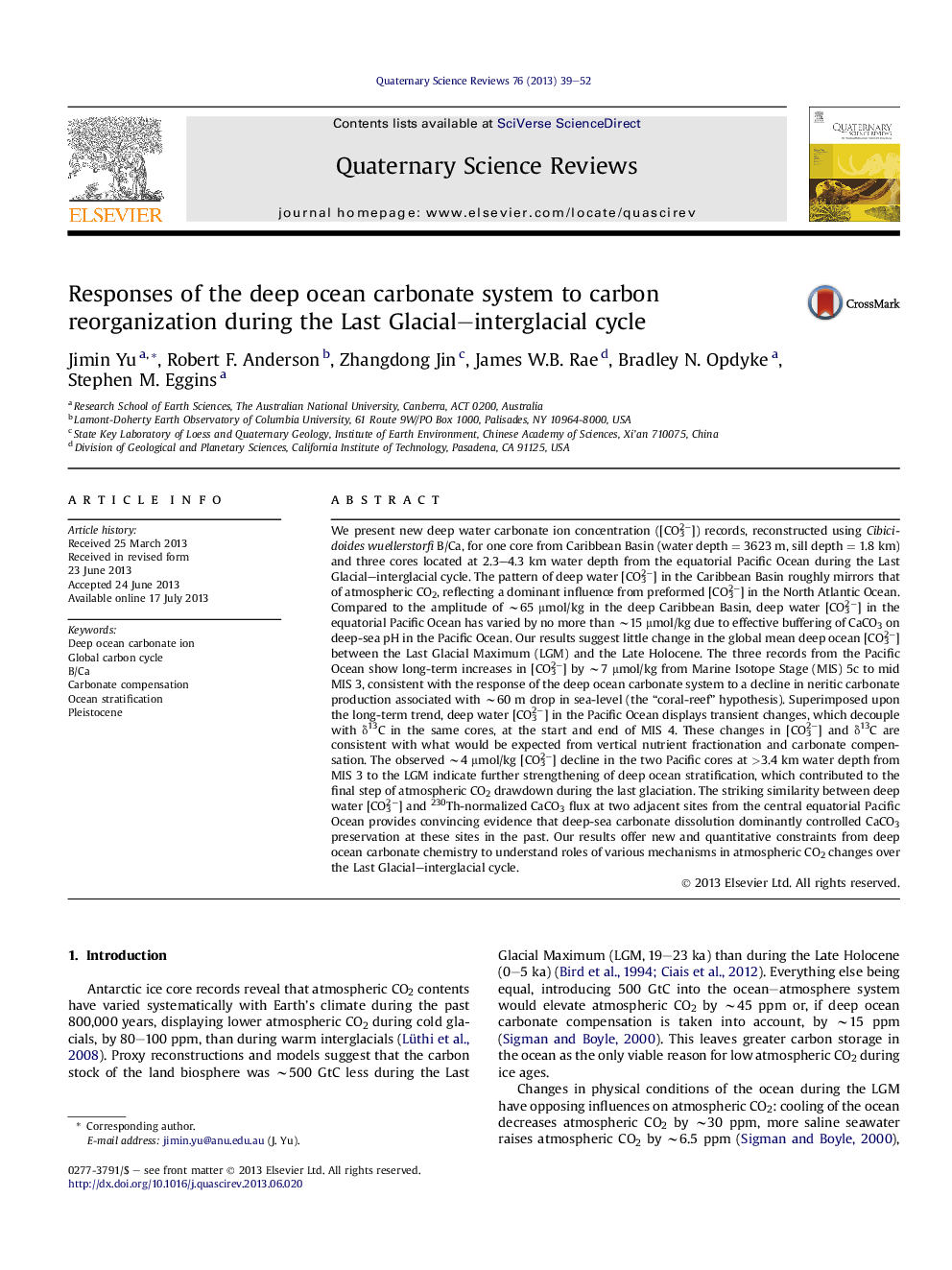| کد مقاله | کد نشریه | سال انتشار | مقاله انگلیسی | نسخه تمام متن |
|---|---|---|---|---|
| 6446687 | 1640858 | 2013 | 14 صفحه PDF | دانلود رایگان |
عنوان انگلیسی مقاله ISI
Responses of the deep ocean carbonate system to carbon reorganization during the Last Glacial-interglacial cycle
ترجمه فارسی عنوان
پاسخ سیستم کربناته عمیق اقیانوس به سازماندهی مجدد کربن در طول آخرین دوره ی بینابینی یخبندان
دانلود مقاله + سفارش ترجمه
دانلود مقاله ISI انگلیسی
رایگان برای ایرانیان
کلمات کلیدی
موضوعات مرتبط
مهندسی و علوم پایه
علوم زمین و سیارات
زمین شناسی
چکیده انگلیسی
We present new deep water carbonate ion concentration ([CO32â]) records, reconstructed using Cibicidoides wuellerstorfi B/Ca, for one core from Caribbean Basin (water depth = 3623 m, sill depth = 1.8 km) and three cores located at 2.3-4.3 km water depth from the equatorial Pacific Ocean during the Last Glacial-interglacial cycle. The pattern of deep water [CO32â] in the Caribbean Basin roughly mirrors that of atmospheric CO2, reflecting a dominant influence from preformed [CO32â] in the North Atlantic Ocean. Compared to the amplitude of â¼65 μmol/kg in the deep Caribbean Basin, deep water [CO32â] in the equatorial Pacific Ocean has varied by no more than â¼15 μmol/kg due to effective buffering of CaCO3 on deep-sea pH in the Pacific Ocean. Our results suggest little change in the global mean deep ocean [CO32â] between the Last Glacial Maximum (LGM) and the Late Holocene. The three records from the Pacific Ocean show long-term increases in [CO32â] by â¼7 μmol/kg from Marine Isotope Stage (MIS) 5c to mid MIS 3, consistent with the response of the deep ocean carbonate system to a decline in neritic carbonate production associated with â¼60 m drop in sea-level (the “coral-reef” hypothesis). Superimposed upon the long-term trend, deep water [CO32â] in the Pacific Ocean displays transient changes, which decouple with δ13C in the same cores, at the start and end of MIS 4. These changes in [CO32â] and δ13C are consistent with what would be expected from vertical nutrient fractionation and carbonate compensation. The observed â¼4 μmol/kg [CO32â] decline in the two Pacific cores at >3.4 km water depth from MIS 3 to the LGM indicate further strengthening of deep ocean stratification, which contributed to the final step of atmospheric CO2 drawdown during the last glaciation. The striking similarity between deep water [CO32â] and 230Th-normalized CaCO3 flux at two adjacent sites from the central equatorial Pacific Ocean provides convincing evidence that deep-sea carbonate dissolution dominantly controlled CaCO3 preservation at these sites in the past. Our results offer new and quantitative constraints from deep ocean carbonate chemistry to understand roles of various mechanisms in atmospheric CO2 changes over the Last Glacial-interglacial cycle.
ناشر
Database: Elsevier - ScienceDirect (ساینس دایرکت)
Journal: Quaternary Science Reviews - Volume 76, 15 September 2013, Pages 39-52
Journal: Quaternary Science Reviews - Volume 76, 15 September 2013, Pages 39-52
نویسندگان
Jimin Yu, Robert F. Anderson, Zhangdong Jin, James W.B. Rae, Bradley N. Opdyke, Stephen M. Eggins,
